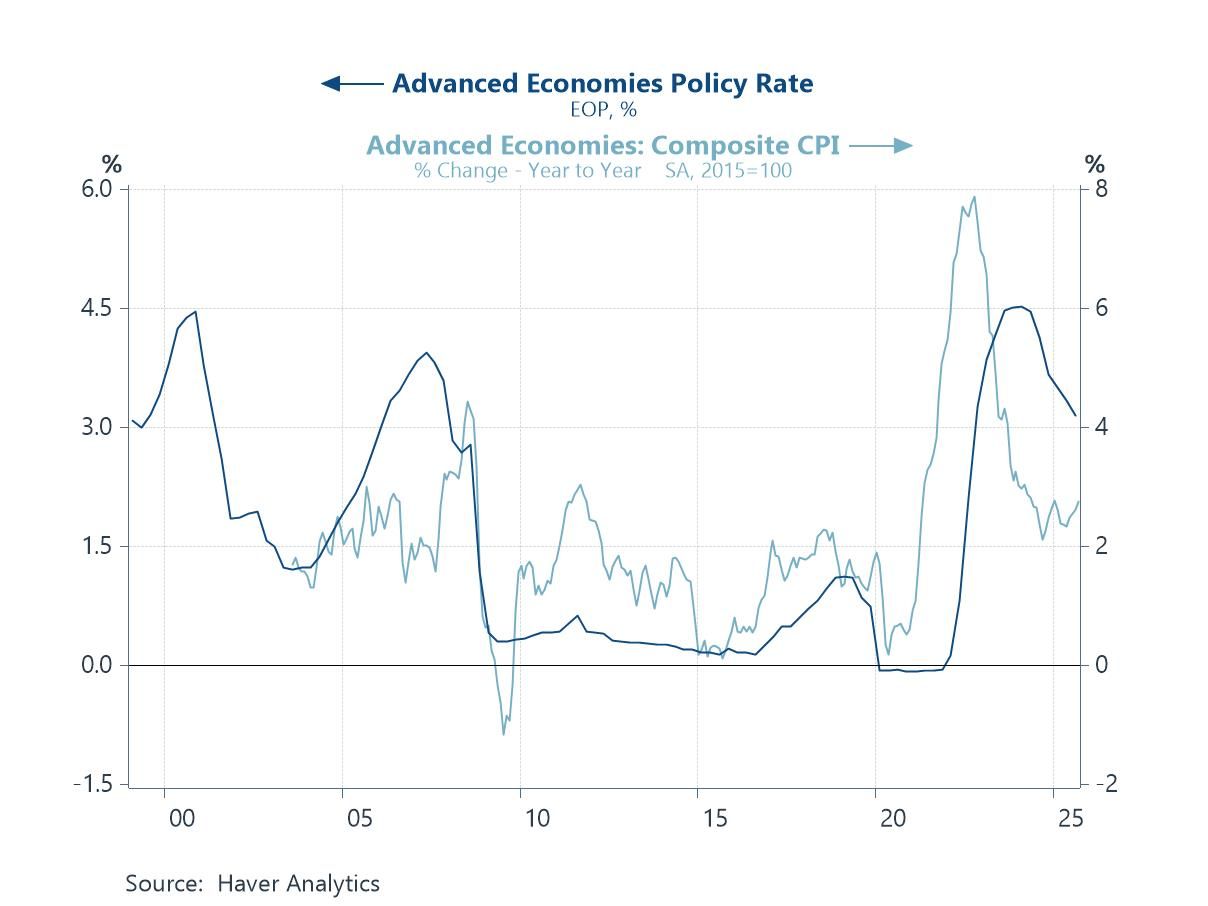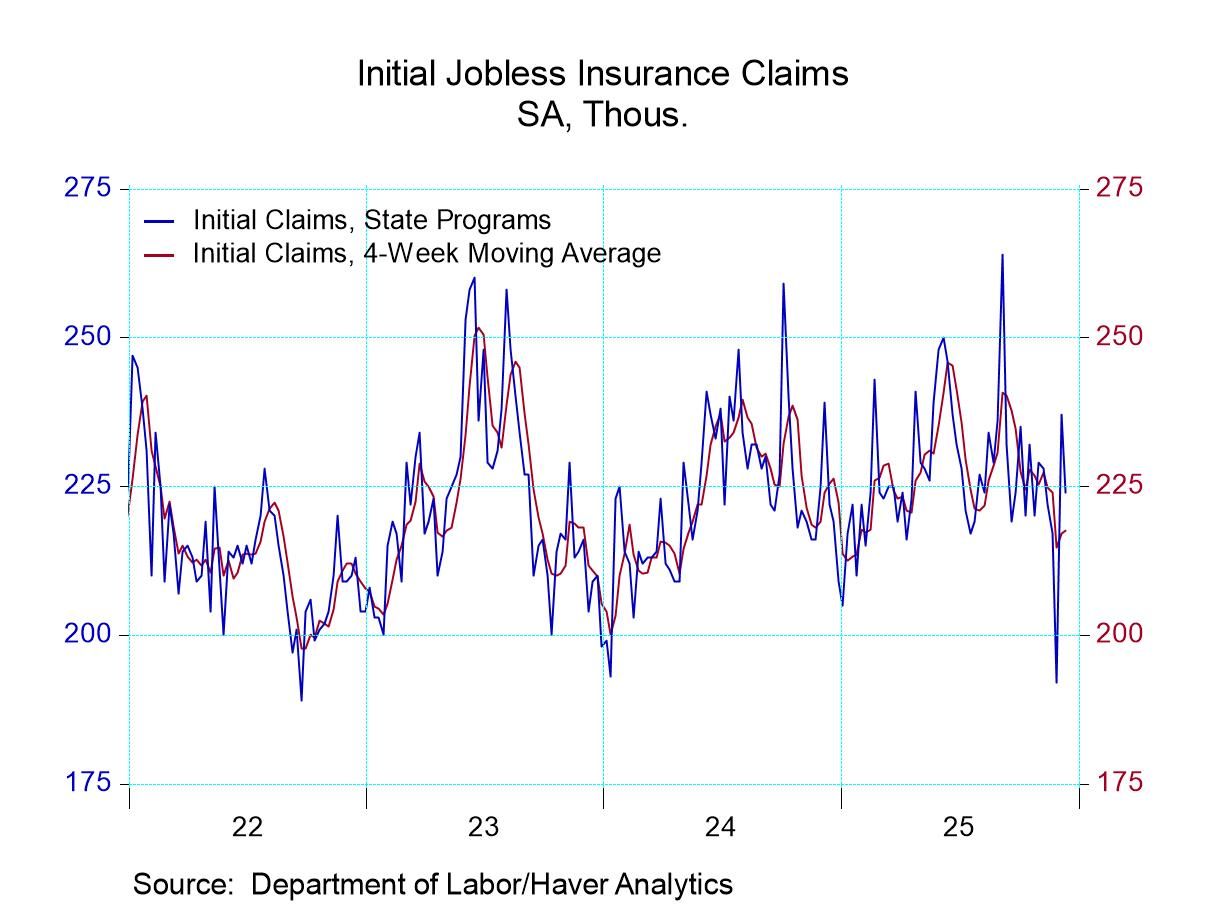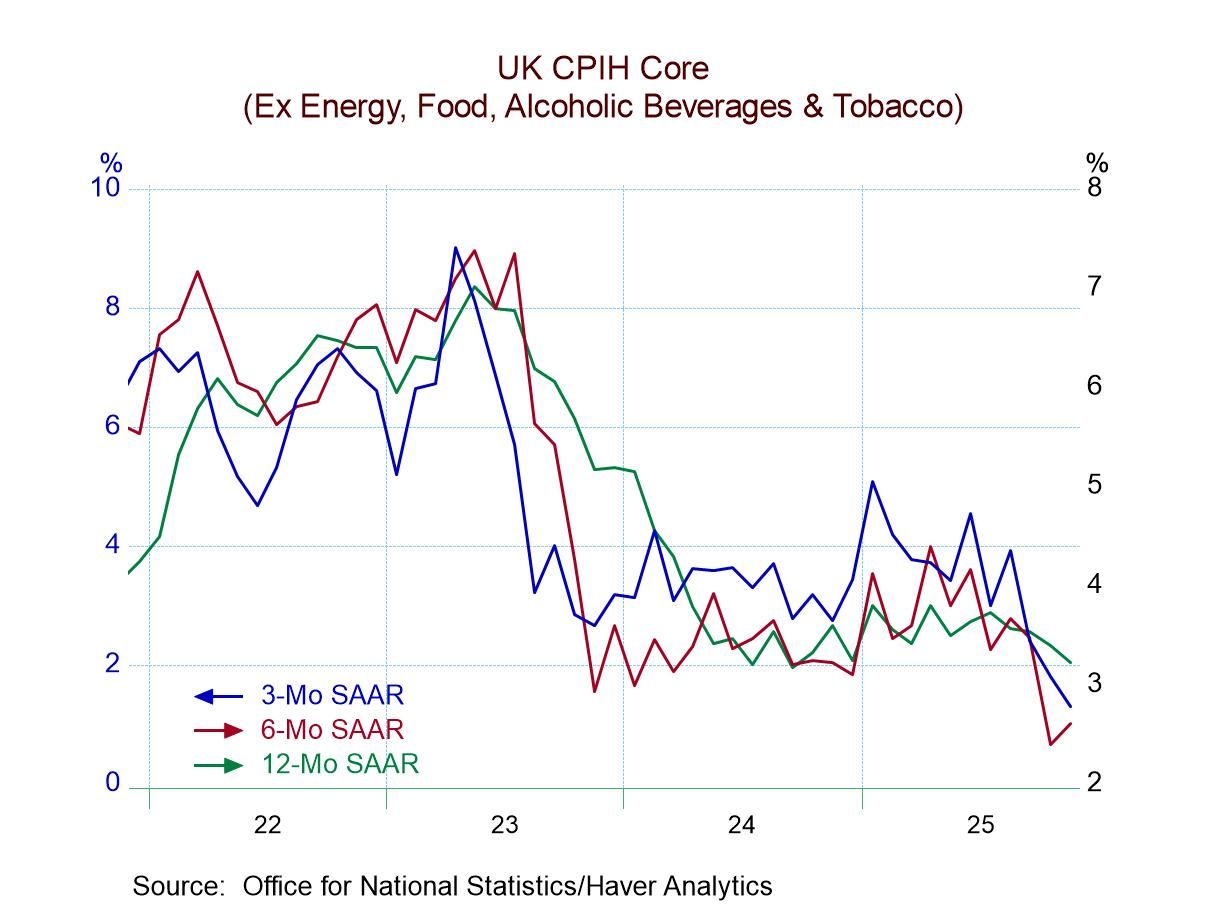Spanish Inflation Accelerates

Spanish headline inflation has clearly hit a sticky spot and stopped its tendency to fall. Inflation peaked in 2022. Headline inflation is now clearly up from its low point of early-2023 and moving sideways at a higher level above the 2 1/2 percent growth rate.
The Spanish HICP rate for February backed off from its January spike, growing by 0.4% in February, but that was after a 0.9% increase in January. As a result of that clustering of strong price gains, inflation is spurting. Spain’s inflation on the HICP shows 3% over 12 months, a gain over six months at a 4% pace, and a gain over three months at a 5.8% pace. That's a clear pattern of acceleration and of course a level of inflation on all horizons that's higher than the benchmark 2% pace that the ECB sets for the community as a whole.
Spain’s domestic CPI shows a similar pattern with the CPI up by 0.3% in February after a 0.8% gain in January. CPI inflation is up 2.8% over 12 months; that gain rises to a 3.4% pace over six months and a 4.8% pace over three months. Spain’s inflation rate is clearly climbing whether we look at the HICP measure or the domestic CPI measure.
Core inflation is usually better behaved because it omits the volatile inflation elements of the headline gauges. Spain's core is up by 0.4% in February after rising by 0.5% in January. The 12-month core inflation rate is at 2.5%; that pace decelerates to 1.7% over six months but then it rises, gaining to 4.8% at an annual rate over three months.
Spain's inflation rate over three months whether measured by the HICP or CPI headlines, or the core is clearly excessive. Over six months inflation is excessive on both headline measures, but the core comes in at only 1.7%. Over 12 months Spain's inflation is between the lower 2.5% core increase and the higher 3% increase on the HICP.

At the bottom of the table, I rank the year-over-year inflation measures among their data back to January 1997. Viewed in this way, Spain’s HICP headline has a 64-percentile rank that's similar to the headline rank on its domestic CPI gauge which is at its 61-percentile. These percentile readings place the current inflation rate in the queue of data back to January 1997 above their historic medians; the medians for ranked data occur at the 50th percentile. Of course, what's important is where inflation is relative to the ECB target which is 2% and we've already looked at that. Additionally, it's interesting to see where inflation sits relative to its past performance. Now on that ground, the core CPI is extremely hot; the 2.5% year-over-year core CPI rate has an 87.7 percentile standing meaning that it has been higher less than 13% of the time since 1997. Core inflation, of course, is a better gauge of inflation’s sustainable pace since it excludes the most volatile parts of the CPI. The core inflation rate peaked at a lower level, and it's been coming down at a slower pace. This is the same experience that we see in the United States and in Germany as well as other countries.
The inflation metrics don't raise too many questions about what is going on. It's clear that in Spain the inflation rates peaked, decelerated, and the deceleration has either slowed or stopped. And there's no way really to know whether the drop has slowed or whether it's actually stopped. We will only know that in time. But the ranking data tell us that the headline inflation numbers have come down closer to historic norms while the core inflation rate is still elevated. And that's troublesome because the core inflation rate is stickier.
Spain is an early reporter of February inflation. We've recently gotten done looking at performance and the European Monetary Union where through January we noticed a number of countries were showing some pickup in inflation over three months. There is a broad international theme of inflation either picking up again or slowing its drop. And the outlook for growth globally has become confused. Germany seems to be in recession, Japan is playing recession hokey-pokey sticking one foot in then pulling it out again with data revisions. The U.S. has shown resilient growth, but the recent U.S. retail sales trend shows deceleration in sales there. Markets have been priced for rate cuts and for a number of cuts as well. And now this is all back in flux. Data watching is back in vogue while forecasting is showing its limitations.
Robert Brusca
AuthorMore in Author Profile »Robert A. Brusca is Chief Economist of Fact and Opinion Economics, a consulting firm he founded in Manhattan. He has been an economist on Wall Street for over 25 years. He has visited central banking and large institutional clients in over 30 countries in his career as an economist. Mr. Brusca was a Divisional Research Chief at the Federal Reserve Bank of NY (Chief of the International Financial markets Division), a Fed Watcher at Irving Trust and Chief Economist at Nikko Securities International. He is widely quoted and appears in various media. Mr. Brusca holds an MA and Ph.D. in economics from Michigan State University and a BA in Economics from the University of Michigan. His research pursues his strong interests in non aligned policy economics as well as international economics. FAO Economics’ research targets investors to assist them in making better investment decisions in stocks, bonds and in a variety of international assets. The company does not manage money and has no conflicts in giving economic advice.




 Global
Global

